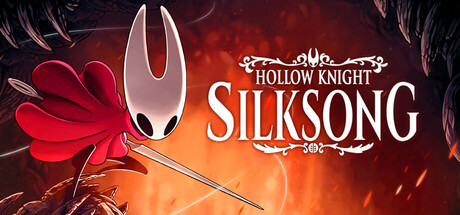I was ready. The game was set to release on Sept. 4, 2025 at 10 a.m. EST. At exactly that time, I logged onto the Nintendo Eshop to make my purchase. I clicked “Buy” and waited for the website to load. And waited. Nothing happened. I tried again. Still nothing. I navigated to Steam to try making the purchase there, and was greeted by a server-side error message. I tried making the purchase for over an hour until I was finally able to buy it from a third-party website. I later learned that this was not an isolated issue: so many people were trying to buy the game that it crashed every major storefront on launch, according to BBC News.
It is perhaps unsurprising that Hollow Knight: Silksong would cause such a ruckus on release. The original Hollow Knight was a massive success, garnering critical acclaim and selling 15 million copies, according to Gamerant. Its sequel has been one of the most anticipated video games since its announcement back in 2019.
Both Hollow Knight and Silksong were developed by Team Cherry, an Australian indie game developer consisting of three people. Like its predecessor, Silksong is a 2-D platformer with a focus on exploring a large world with non-linear progression (this style of game is often referred to as a “metroidvania.”)
Hollow Knight: Silksong has received largely positive reviews by fans and critics (it holds a score of 92/100 on review aggregator Metacritic), though it has been criticized for its high difficulty. It remains to be seen whether it will have the same staying power as its predecessor, especially once the hype accumulated from the seven-year wait dies down.
Hollow Knight is one of my favorite video games. I fell in love with its haunting atmosphere, beautiful art and music, deep lore and wealth of high-quality content. Hollow Night has engrossing, though often brutally difficult, gameplay (completing the Path of Pain is one of my proudest gaming accomplishments; if you know, you know.) It is one of the video games that made me truly love the medium and accept it as a valid art form.
Silksong builds on the gameplay systems and aesthetics of the original game. It is not a radical departure, but does make meaningful changes that affect how the game feels to play. Compared to the playable character (usually referred to as the knight) in Hollow Knight, Hornet, the protagonist of the sequel, requires more finesse and spatial awareness to control optimally. She moves much faster and more fluidly than the knight, encouraging a far more aggressive and aerial playstyle. Whether platforming or engaging in combat, the movement in Silksong is simply amazing: running, dashing, lunging and grappling flow together in a highly satisfying dance. The progression and customization systems have also been changed, and Hornet can modify her moveset to a much greater extent than almost any other metroidvania I’ve ever played.
With this fluid and versatile moveset comes a steep challenge to put it all to the test. Hollow Knight is a hard game, but Silksong feels even more punishing. Even tiny mistakes can cost dearly, as Hornet can go from full health to near-death in a matter of seconds. Yet, like the original game, Silksong offers a degree of non-linearity that allows players to tackle challenges at their own pace. After dying for the tenth or twentieth time to one of the bosses, I decided to go exploring, and stumbled across new upgrades and items that allowed me to more comfortably defeat the boss. It still required a good deal of skill, but, like the original, Silksong has a very high skill ceiling, meaning that, with enough practice, seemingly impossible challenges become manageable, and beating them provides a great deal of satisfaction. However, I can certainly understand the criticisms of Silksong’s difficulty. It is a game that requires intense concentration and a willingness to deeply engage in its mechanics, and that does not appeal to all gamers. This appeals to me personally, although some of the checkpoint placement is downright infuriating.
One essential element of any metroidvania is the world and presentation. Hollow Knight was a gorgeous game, utilizing hand-drawn characters and environments to create the fallen kingdom of Hallownest. Silksong’s world, Pharloom, is a step up in terms of detail, size and variety. There are secrets everywhere, from items and upgrades to hidden areas and bosses. Pharloom is, in general, a very fun place to explore, although some areas are drab, repetitive or frustrating (I’m looking at you, Bilewater). Like Hollow Knight, the story can be quite cryptic, and relies heavily on environmental storytelling and conversations with characters. Even without fully understanding the lore of this world, the atmosphere is enough to pull me in.
For me, the greatest part of the presentation is the orchestral soundtrack composed by Christopher Larkin. It is beautifully atmospheric, and I’ve taken to listening to it outside of the game (which I do not do for many soundtracks). Even if you do not play the game, I recommend listening to the music.
Although I have yet to complete Hollow Knight: Silksong, I have greatly enjoyed my time playing. I would certainly recommend it to anyone who can put up with its difficulty. It is a beautiful work of video game art.

